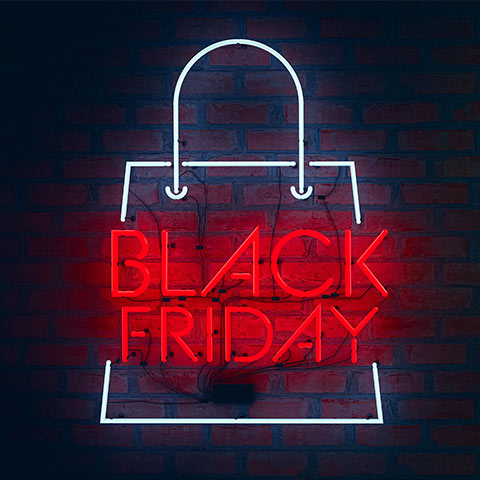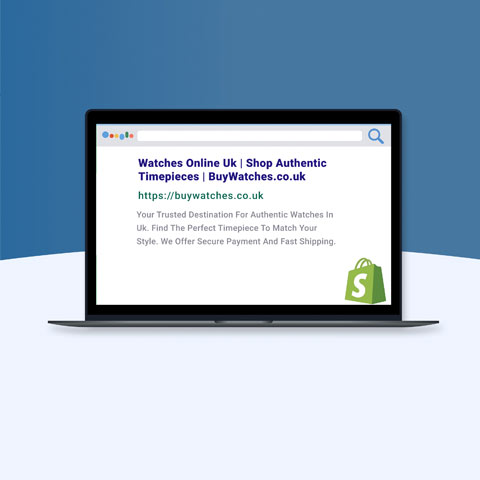10 Boxing Day Email Marketing Examples


People aren’t just loosening their belts after their Christmas dinner. They’re loosening their purse strings in a bid to find a Boxing Day bargain.
While it might not be as big as Black Friday, Boxing Day is still a key date for retailers - especially if your customers are primarily UK-based.
Traditionally celebrated on December 26th, Boxing Day has shifted from its Victorian roots of charity and gratitude to become a major shopping holiday in countries like the UK, Canada, Australia, and South Africa.
For retailers, it’s a prime opportunity to keep the momentum of holiday sales going.
Sure, Black Friday might steal the global spotlight, but Boxing Day offers something unique: a chance to engage customers ready to spend their gift money or nab post-Christmas discounts, all wrapped up in a memorable end-of-year shopping experience.
In 2023, Boxing Day spending in the UK alone reached £3.8 billion, with over 50% of shoppers actively hunting deals both online and in-store. That figure is set to grow slightly in 2024 as inflation stabilises and consumer confidence rises.
If you’re looking to make Boxing Day a part of your strategy, start by tailoring your campaigns to the regions where it matters most. And if “Boxing Day” language doesn’t resonate with your audience, don’t worry - we’ve got ideas to help you close out 2024 strong, no matter where your customers are.
What are Boxing Day sales?
Boxing Day sales are somewhat of a tradition in the UK. With bellies full of turkey, eggnog, and Quality Street, people hit the shops to snap up huge discounts.
The day gets its name from the tradition of giving Christmas boxes or gifts to service workers, but it’s spiralled into something else entirely - now, it’s a big post-holiday sales period for retailers. It’s seen as a chance to clear out excess inventory and attract bargain-hunting shoppers ready to spend their Christmas cash.
There’s a reason many businesses rely on Boxing Day sales as a quick boost to their bottom line. It’s common for retailers to offer steep discounts across their entire stock, particularly seasonal goods that are suddenly “so yesterday”.
What are Boxing Day sales strategies?
Boxing Day sales strategies often hinge on one thing and one thing only: slash prices to get shoppers to buy in volume.
Here are some common tactics.
- Discounts. Retailers often cut prices by 30%, 50%, or even 70% on selected items to drive post-holiday shopping. Deep discounts help clear lingering inventory in the lull after Christmas.
- Buy-one-get-one-free (BOGO) deals. Volume sales are the name of the game on Boxing Day. Retailers want to get as rid of as much stock as possible, so traditional BOGO deals are a go-to.
- Doorbusters. These are extremely low-priced, limited-quality items used to get shoppers through the door (or digital door). They tend to sell out quickly but are great for creating a festive buzz and getting people to your site.
- Gift card promos. Some stores offer bonuses when you purchase a gift card, like getting an extra £10 card for every £50 spent.
- Bundler offers. Bump up basket value by packaging complementary products together at a cheaper price.
When to start planning your Boxing Day sales campaign
The lead-up to Christmas is overwhelming. Sales are at their yearly peak, festive campaigns are playing on repeat, and you’re metaphorically fighting tooth and nail against your competitors to win over new shoppers.
Boxing Day is probably the last thing on your mind… but it shouldn’t be.
It may just be one day, but it’s your chance to secure last-minute end-of-year sales and finish the year on a high.
Your prep work should begin weeks in advance - we’re talking mid-November. At this point, you’ll have shipped your BFCM campaigns and will finally have some breathing room to plan your post-Christmas promotions.
Getting ahead of the pre-Xmas rush does two things:
- It gives you enough time to build interest in your Boxing Day sales so shoppers are primed and ready to purchase.
- It makes sure your campaign doesn’t get lost in the holiday noise - the early bird catches the worm, you know.
Here’s a sample plan of action to get you started.
Warm up your audience
Boxing Day is prime time to reach out to engaged subscribers - a.k.a. people who opened, clicked, or purchased during Black Friday or Cyber Monday. These people are keen for a deal.
Use this time to segment your list into active customers and leads and consider creating a re-engagement flow for subscribers who didn’t make moves earlier in the season.
The same principle applies to SMS subscribers: keep them engaged with quick, value-packed updates that build excitement for what’s coming.
Map out your email and SMS flows early
Think of your Boxing Day campaign as an extensive of your holiday strategy.
Build out omnichannel SMS and email flows that include:
- Teasers. Send early hints in mid-December about what’s to come. Use subject lines like “One last surprise before the year ends…” to spark curiosity.
- Reminders. Use a countdown strategy leading up to December 26th and create urgency with reminders like “Get ready - Boxing Day deals drop tomorrow!”.
- Live promos. On the big day itself, send out an email as soon as the sale goes live. For SMS subscribers, a short, punchy message with a direct link to your sales page works wonders.
- Last chance nudges. Send follow-ups on December 26th or early December 27th to catch super last-minute shoppers.
Tip: your email and SMS messaging should feel like part of the same campaign. If you’re teasing offers on one channel, make sure you’re reinforcing that message on the other.
10 Boxing Day sales email examples
Get your creative juices flowing with these real-life Boxing Day sales emails.
1. Treat your VIPs to something special…
…before you open it up to your general audience.
If this seems counterintuitive during a season where you’re getting lots of new customers, remember: your customers aren’t like your kids. You’re allowed to have favourites.
Naturally, your favourites are the ones who keep coming back to spend money with your brand, year after year, sale after sale. Especially over the holidays, these VIPs deserve a little something extra for their loyalty, whether that’s early access to a sale or product drop, or an exclusive discount or other incentive (more on incentives later).
Here’s a great example from K-beauty lifestyle brand Sukoshi Mart. Their Boxing Day marketing email uses a bright, bubbly design to let subscribers know they’re lowering prices up to 60% sitewide. But just under the fold, the email makes it clear who has “exclusive early access” to the sale and who only has general access, with a countdown clock that urges all readers to act fast before the sale ends.
2. Promote a general Boxing Day sale or discount
Once you’ve rewarded your VIPs for their loyalty, open up your Boxing Day sale to your general audience.
After the expensive pre-Christmas shopping season, one way to engage your subscribers during the lull between Christmas and New Year’s is to highlight how much they can save when they buy your products.
Here, see how lifestyle fashion brand Skinnydip London makes their winter sale 50% discount offer impossible to miss, enticing subscribers to click the prominent call to action (CTA) to shop and save:
Here are a few example subject lines for this Boxing Day marketing idea:
- Boxing Day Sale: Get 20% off everything!
- Our Best Ever Boxing Day SALE! £50 off all [insert product category]
- Surprise! MEGA 50% Off Boxing Day Sale
3. Not into discounts? Try a different incentive
The holiday shopping season is known for steep discounts, but that doesn’t mean they’re your only option - and remember, higher discounts do not necessarily equate to higher conversions.
If discounts aren’t the right approach for your brand, consider experimenting with a different incentive to drive Boxing Day sales:
- Free gift
- Entry to a contest
- Chance to win a giveaway
- Gift card
- Free shipping
- Bundle deals
Philip Plein Junior offers shoppers free shipping if they make a purchase on Boxing Day.
4. Reduce choice overload by highlighting key products
The end of the year isn’t just expensive - it’s also overwhelming. People are visiting friends and families, cramming in holiday parties, and trying to find time to relax.
That means not everyone will be swayed by an email that advertises even the most impressive incentive. The last thing you want is to invest time and resources into crafting a gorgeous Boxing Day marketing email, only to have someone open it and bounce immediately because they’re thinking, “20% off what?”
Here, see how skincare brand Skinfix solves this problem with their Boxing Day marketing email. First, instead of advertising a universal sale, Skinfix offers email subscribers a themed 20% off discount code, “BOXING20.” But then, the email goes on to highlight “press faves” of the year - and pairs each with a review that can help shoppers make a more informed decision on exactly how to use that promo code.
Boxing Day marketing tip: If you want to take this idea to the next level and make your email subscribers feel truly seen by your messaging, include personalised product recommendations instead of bestsellers or press favourites.
5. Empathise with the post-holiday mindset
Deep discounts aren’t the only thing that can entice customers to spend their hard-earned dollars on Boxing Day. Remember: there’s a human being on the other side of that screen.
If you focus your copy on something that your subscribers might already be thinking about, you might be able to boost excitement for your offers in a less predictable way.
Consider this example from skincare brand Evolve Organic Beauty. True, they’re offering an enticing 25% discount. But the real centrepiece of the email is the thoughtful note from founder Laura Rudoe, who writes about the importance of treating yourself and picking up belated gifts for friends - two things her customers might already be thinking about on Boxing Day.
6. Respect the inbox by timing your emails just right
Speaking of customer mindsets…the difference between someone opening your email and sending it straight to the trash often comes down to something infuriatingly simple: timing.
Think about your own relationship with brand emails. Receive one in the middle of dinner with your family, and you might get annoyed by the notification or miss it entirely. But receive one when you’re doom scrolling during movie night, and you might be in exactly the right mood to shop.
Contemporary furniture retailer Danetti sent two emails on Boxing Day - the first in the morning and another in the evening. This sequencing made the emails less likely to interrupt customers’ festivities with friends and family, but if a subscriber missed one, the brand still had another shot at capturing their attention.
And notice another smart timing-related move: Danetti’s evening email focused on discounted beds and mattresses - just as subscribers were thinking about turning in for the night.
Boxing Day marketing tip: Smart marketing platforms like Klaviyo empower you to send messages based on subscriber location or time zone, so all you have to think about is when you want your subscribers to read your email - the platform takes care of the rest. Learn more about Smart Send Time in Klaviyo.
7. Tap into FOMO
Depending on how you approach your email send times and sale timelines, you might be able to get your customers to take fast action during your Boxing Day sales by incorporating urgency into your messaging.
A countdown timer is a great way to spark a sense of scarcity and FOMO among your subscribers who may be in the mood to shop, but aren’t feeling quite motivated enough to simply head to your website and browse on their own.
Here, see how eyewear brand Vintage Frames Company uses several tactics to tap into FOMO with their Boxing Day marketing email: a ticking clock, the words “deals end in,” and a flashing sign that warns, “FINAL HOURS.”
Here are a few example subject lines for this Boxing Day marketing idea:
- Didn’t get what you wanted?
- Grab it now – 30% off!
- TO: Me. FROM: Me. BEST GIFT EVER!
- Ring in the new year with the [insert product name] you’ve always wanted
8. Turn your one-time campaign into a series
Who says Boxing Day promotions have to last for just a day? Introducing: Boxing Week.
Black Friday sales have been starting earlier and earlier every year, shifting consumer expectations from one-day doorbuster sales to extended shopping events. A longer sale period helps keep the orders flooding in through the days in between Boxing Day and the New Year, which can otherwise be a little quiet once the usual holiday shopping frenzy comes to a halt.
Bang & Strike, a premium men’s underwear brand, hit the right note when they sent a series of simple emails starting on Boxing Day and leading up to the New Year. By sending 3 emails across 12 days, they made sure their sale stayed top of mind - without overdoing it.
Here are a few example subject lines for this Boxing Day marketing idea:
- BOXING WEEK SALE – 2 DAYS TO GO!
- Let the celebrations continue! Get up to 35% off.
- Boxing Week Sale! Save up to 50% + FREE Shipping
Boxing Day marketing tip: With your Boxing Day marketing series, segment each send to exclude customers who’ve already purchased during the sale period. There’s nothing worse than placing an order only to receive a marketing blast the next day urging you to buy the same thing you already bought.
9. Invite your US customers to celebrate Boxing Day, too
Some brands choose to focus their Boxing Day email marketing copy around “winter sales,” “holiday sales,” or “after-Christmas sales” rather than “Boxing Day sales” to appeal to a global audience.
It’s a particularly clever tactic if you want to broaden your Boxing Day marketing to include your US customers, who may not be familiar with the holiday. Instead, appeal to something more likely to resonate, like not getting what they wished for on Christmas or needing something to buy with their holiday cash and gift cards.
Here, see how luxury apparel brand Holland Cooper uses wintery imagery and product shots of clothing that would be ideal for cold weather to advertise their “winter sale” on Boxing Day:
Eco-friendly baby brand Natural Baby Shower takes a similar approach in their Boxing Day marketing email, featuring cosy imagery alongside the copy, “Our winter sale is now on!”
Here are a few example subject lines for this Boxing Day marketing idea:
- ⛄ Woohoo! Up to 70% off Winter Sale starts NOW.
- Don’t miss our BIG winter sale! 50% off everything
- Brrr! You know what that means… WINTER SALE 50% OFF!
10. The grand finale: help people kick start their New Year’s resolutions
Given the holiday’s proximity to the end of December, New Year’s resolutions are another option for Boxing Day marketing emails - especially for sports, fitness, nutrition, and wellness brands.
Here, see how Nuun, a company that specialises in hydration and electrolyte products, uses Boxing Day as an opportunity to offer a free 8-week training program. Using phrases like “start the year off strong” and “get a jumpstart on your goals,” the email not only positions Nuun as an authority on fitness, but builds trust with subscribers who are in the “fresh start” mindset - all without pushing a sale.
Here are a few example subject lines for this Boxing Day marketing idea:
- Get a headstart on your resolutions: 15% off ALL sportswear
- New Year, New You: 25% off self-care essentials (you deserve it!)
- 7 must-haves if you’re going vegan in January
Boxing Day automations
Leftover turkey will be the last thing on your mind when you’re raking in Boxing Day revenue. Here are some automations to help you make the most of it.
1. Early access emails and SMS alerts
Send your VIPs or loyal customers an exclusive “early bird” invite to your Boxing Day sales. Pair an email announcement with a follow-up SMS to create urgency. This combo ensures your best customers know about the deals before the general public - and act fast.
2. Abandoned cart reminders
Shoppers often get distracted during sales, so nudge them back with abandoned cart emails and SMS reminders. Use dynamic content to show them exactly what they left behind and highlight any Boxing Day discounts or limited stock. Add a subtle push notification for app users to seal the deal.
3. Time-sensitive flash sale alerts
Boxing Day is perfect for flash sales. Automate a series of alerts - an email for the announcement, an SMS 30 minutes before the sale ends, and a countdown-driven push notification.
4. Product recommendation follow-ups
Boxing Day shoppers often browse but hesitate to buy. Set up automations to send personalised product recommendations based on their browsing history or previous purchases. Push these through email and include a quick SMS with a friendly nudge.
5. Back-in-stock notifications
If you sell out of popular items, automated back-in-stock messages can turn missed opportunities into sales. Use email for detailed product updates and SMS for a short-and-sweet notice.
6. Post-purchase Thank You and upsell
Capitalise on the Boxing Day momentum with post-purchase automations. Thank customers for their orders with a heartfelt email and suggest complementary products in a follow-up. Use SMS or push notifications to share loyalty program points or exclusive discounts on their next purchase.
7. Last chance reminders
When your sale is about to end, set up a multi-channel “last chance” push. Start with an email and SMS combo in the morning, then follow up with a push notification and a countdown Story on Instagram or Facebook.
8. Social proof campaigns
Automate social proof emails showcasing what’s trending in your sale. Include customer reviews, “hurry - only X left” messages, and real-time stats like “200 sold today.” Back this up with dynamic retargeting ads and UGC posts on social media.
Tip: beat the Boxing Day blues with an omnichannel approach
To make all of this click, keep the messaging consistent. If You're a Klaviyo Customer, use Klaviyo’s segmentation tools to make sure the right people get the right message, no matter the channel. And don’t overwhelm your people - space out touchpoints so your audience feels informed, not bombarded.
Boxing Day vs other holiday sales
How do Boxing Day sales stack up against other favourite festive shopping frenzies?
Boxing Day sales vs Black Friday
Boxing Day sales basically hit the reset button after the festive rush.
While Black Friday is all about snagging deals before the holidays, Boxing Day is when people finally have time to shop for themselves - or cash in those gift cards they got for Christmas. It’s also a chance to move seasonal stock and start fresh for the new year.
Unlike Black Friday - where shoppers expect site crashes and chaos - Boxing Day feels less urgent but equally valuable. Customers are looking for deals, but they’re also browsing for products they missed or didn’t get gifted.
This means you can lean into personalised offers and post-holiday indulgence. Think self-gifting and “treat yourself” messaging.
The timing of Boxing Day also gives you a strategic edge. It falls in a sweet spot before the slower retail weeks in January, which means you can use your campaigns to create momentum. For example, your Boxing Day promotions can subtly introduce customers to your upcoming January sales. Highlight how they can save even more by sticking with you into the new year - whether that’s with a sneak peek of January deals, early access for email subscribers, or loyalty program perks.
Boxing Day sales vs January sales
Boxing Day is a one-day spectacle - a retail event steeped in tradition. People expect lofty discounts, especially on seasonal items, and they’re ready to spend.
January sales, however, are more drawn out. They’re more for deal-seekers and practical shoppers looking to restock essentials or invest in long-term buys, like fitness gear or home organisation products.
For you, January sales are a great way to keep the momentum going - but the urgency and excitement of Boxing Day just can’t be matched.
To bridge the gap, try teasing January offers in your Boxing Day campaigns - think loyalty perks or early access for repeat customers.
Boxing Day sales vs. Cyber Monday sales
Cyber Monday lives in the shadow of Black Friday. It’s all about online exclusives and last-minute holiday buys. Shoppers expect tech-heavy discounts and smaller flash deals, often focused on convenience.
Boxing Day, in contrast, is broader. It’s less about tech and more about everything else - fashion, home goods, beauty, and more. Plus, Boxing Day appeals to both in-store and online shoppers, so you reach a wider audience.
Want more like this?
Want more like this?
Insight delivered to your inbox
Keep up to date with our free email. Hand picked whitepapers and posts from our blog, as well as exclusive videos and webinar invitations keep our Users one step ahead.
By clicking 'SIGN UP', you agree to our Terms of Use and Privacy Policy


By clicking 'SIGN UP', you agree to our Terms of Use and Privacy Policy
Other content you may be interested in
Categories
Categories

Want more like this?


Want more like this?
Insight delivered to your inbox
Keep up to date with our free email. Hand picked whitepapers and posts from our blog, as well as exclusive videos and webinar invitations keep our Users one step ahead.
By clicking 'SIGN UP', you agree to our Terms of Use and Privacy Policy






![[Research] Apps: The Secret Engine of Ecommerce Growth [Research] Apps: The Secret Engine of Ecommerce Growth](https://images.bizibl.com/sites/default/files/apps-and-web-similarweb-480.jpg)


